Does the thought of getting nude with other people in your local sento, or public bath, raise a smile or make you cringe? Whatever your personal take, the process of bathing in true Japanese form has long been a communal, often social, activity.
Even so, it’s still one part of traditional life that can put some visitors, and nowadays Japanese too, on edge. Still, if you’re not too far on the shy side, we recommend you swallow your pride, understanding that your own bits and pieces are of little interest to anyone else and take off the towel.
Then and now
To most Japanese, sento are a thing of the past, born of an era when houses did not have their own bathrooms in the decades and centuries up to around 1970.
Records show that on the morning of September 1, 1923, there were an estimated 2,800 sento in Tokyo alone. Just two days later, following the biggest quake to hit the city in living memory, that number was down to around 400, with the rest having gone up in flames.
Today, the number is back up to 1,200 or so in the immediate Tokyo area, with nationwide numbers estimated at anywhere up to 7,000, depending on who you ask. Clearly, then, there’s still a call for the old local bathhouse.
How to sento
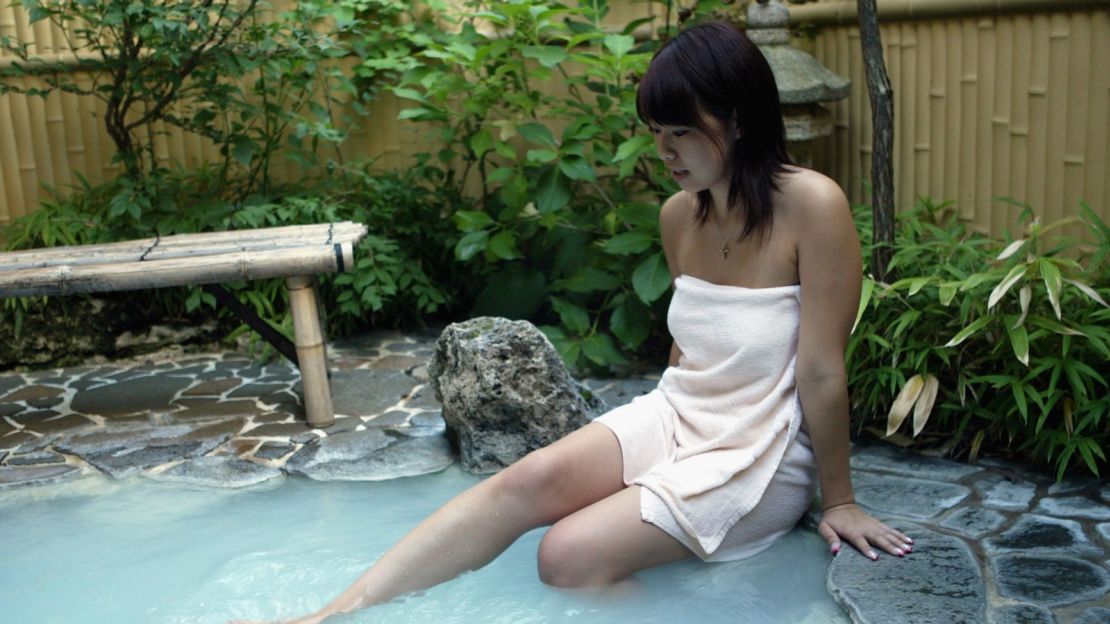
So, what’s the best way to get yourself clean, enjoy the experience and then leave a sento without causing offense? Get naked. Do it, don’t think about it, and don’t worry; nobody is looking.
Note: Only do this once inside the correct changing room. All public baths are segregated by gender (just in case you were wondering).
Armed with a small hand towel for modesty’s sake, as well as your toiletries, head into the main bath area and deposit yourself on a plastic stool in front of one of the personal washing spaces.
There is usually a mirror on the wall, a shower nozzle and hot and cold taps. Rinse off any dirt and grime with water at a temperature you feel comfortable with. Use body soap, shampoo and rinse off every single last sud on your body or in your hair. Repeat at will but make sure the suds are gone once you’ve finished.
Head to your bath of choice and get in slowly. Make sure the towel does not enter the bath. Balancing it on the edge of the bath is fine, as is on the top of your head. When ready, get out, rinse and try a different bath. Nothing to it.
But don’t forget
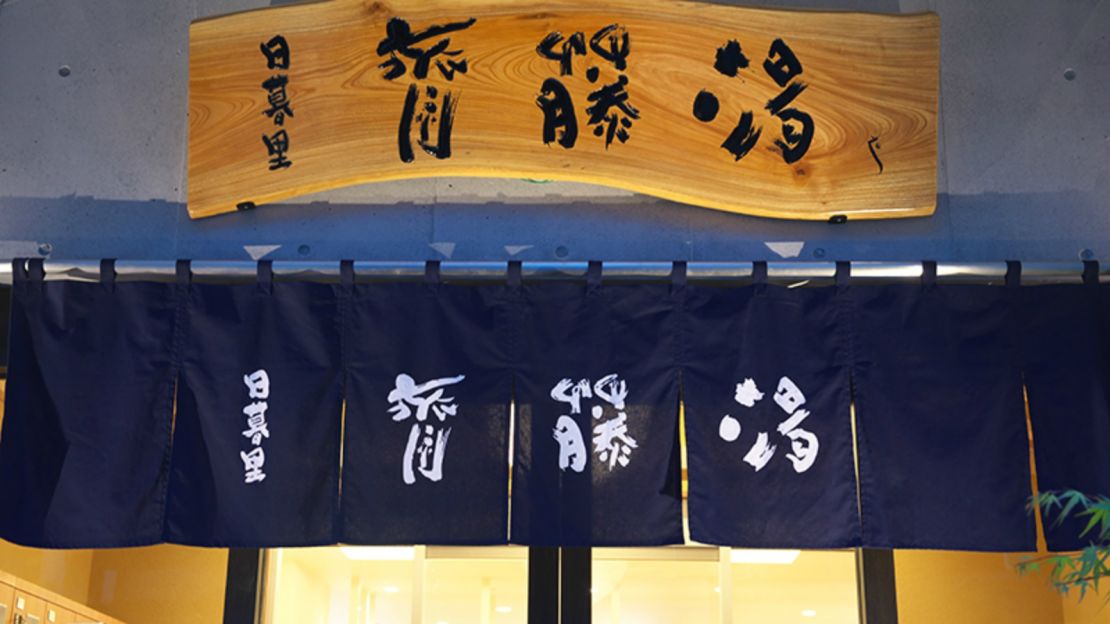
Yen. You won’t need a lot . Prices are regulated by the Tokyo Sento Association and the standard charge in almost all sento for anyone over the age of 12 was $4.12 (¥460) in 2017, $1.60 (¥180) for kids over six and $0.70 (¥80) for the mites.
Post-dip, all sento have vending machines or refrigerators with soft drinks and beer. Bet your bathroom and home can’t match that. As for towels and toiletries, it’s best to take your own toiletries to the sento in a bag, otherwise you’ll have to lay out a few more yen for shampoo and soap as well as towel rental.
You may see off-color water. Many older sento in the Tokyo area use water pumped up from deep below the surface, whose color is naturally yellow or black depending on the area. Some sento even have water with a reddish tinge and small black flecks in the water. It’s all quite natural and the result of mineral deposits.
There are no set rules governing days off, but most sento are closed one day a week – it’ll be posted, along with operating hours, outside the main door.
Now you know what you’re doing, in theory, it’s time to head to your first sento. Our best baths follow, with no apologies for six of the seven being on the east side of the city – the working-class, so-called “downtown” area, still alive, well and packed with sento:
Takara-yu

A lovely sento in the backstreets of Senju, near the Arakawa River, Takara-yu, like others in the area, has a carving of the Seven Lucky Gods of Buddhism above its main entrance and an ever-present ready-to-fire bow and arrow dangling off to the left. Herb and radium baths are available and on the men’s aide a small Japanese garden with resident koi carp can be viewed while cooling down after bathing.
Senju Motomachi 27-1, Adachi-ku, + 81 (0) 3 3882 2660; open 3 p.m.-midnight, closed Friday.
Daikoku-yu
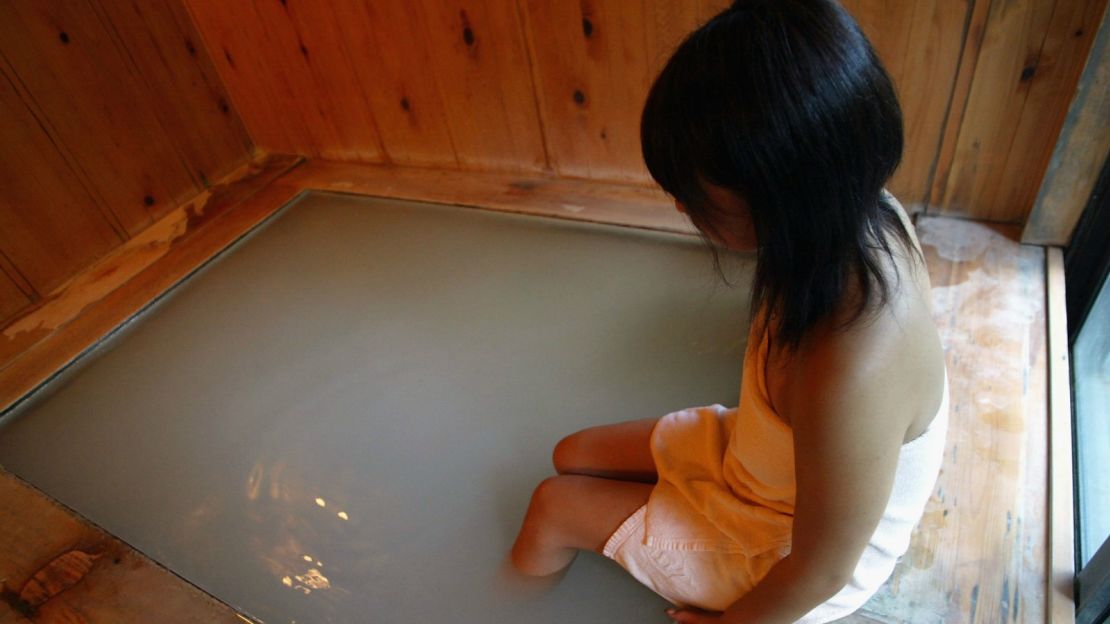
Daikoku-yu is a regular on Japanese television shows and is one of the more striking sento in Tokyo.
Its street-facing facade looks like it could have been removed from a temple, and paneled scenes from Japanese history adorn the ceilings of the changing rooms. Perhaps the highlight is the wooden indoor and outdoor tubs that always surprise and delight first-time bathers.
Senju Kotobuki-cho 32-6, Adachi-ku, + 81 (0) 3 3881-3001; open 3 p.m.-midnight, closed Monday.
Rokuryu Kosen
Once the bathhouse of choice for late-19th-century novelist and poet Mori Ogai, Rokuryu is round the back of Ueno Park, not far from the nation’s first zoo.
The waters here are amber in color and are said to be particularly good for skin issues. In the evening Rokuryu is used as a changing and bathing facilities by the area’s many joggers, so can get busy.
Ikenohata 3-4-20, Taito-ku, +81 (0) 3 3821 3826; open 3:30 p.m.-11 p.m., closed Monday.
Tsubame-yu
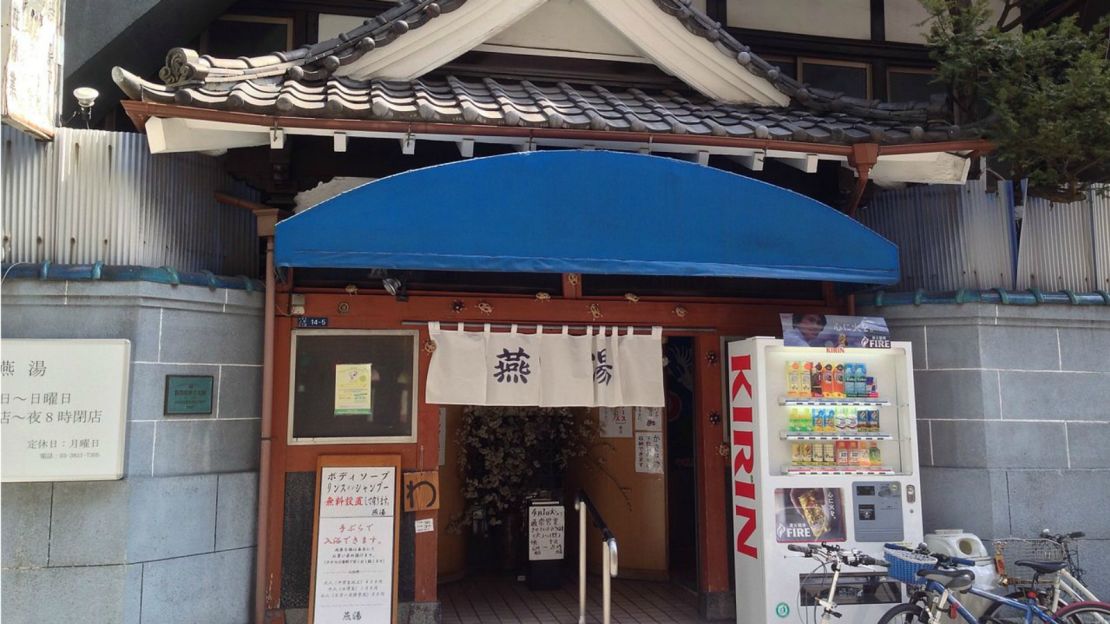
Unusually – Japan traditionally bathes at night – this bath is open from early morning, making it the perfect pit stop before a day out in Ueno or heading to the airport.
Tsubame-yu has its own rock garden next to the baths and a large painting of Mount Fuji looking down on all. In case you hadn’t guessed, if you tour more than a few sento, you’ll come to feel something’s missing when a bath doesn’t feature a glowing pink or white Fuji.
Ueno 3-14-5, Taito-ku, + 81 (0) 3 3831 7305; open 6 a.m.-8 p.m., closed Monday; www.tsubameyu.com
Saito-yu
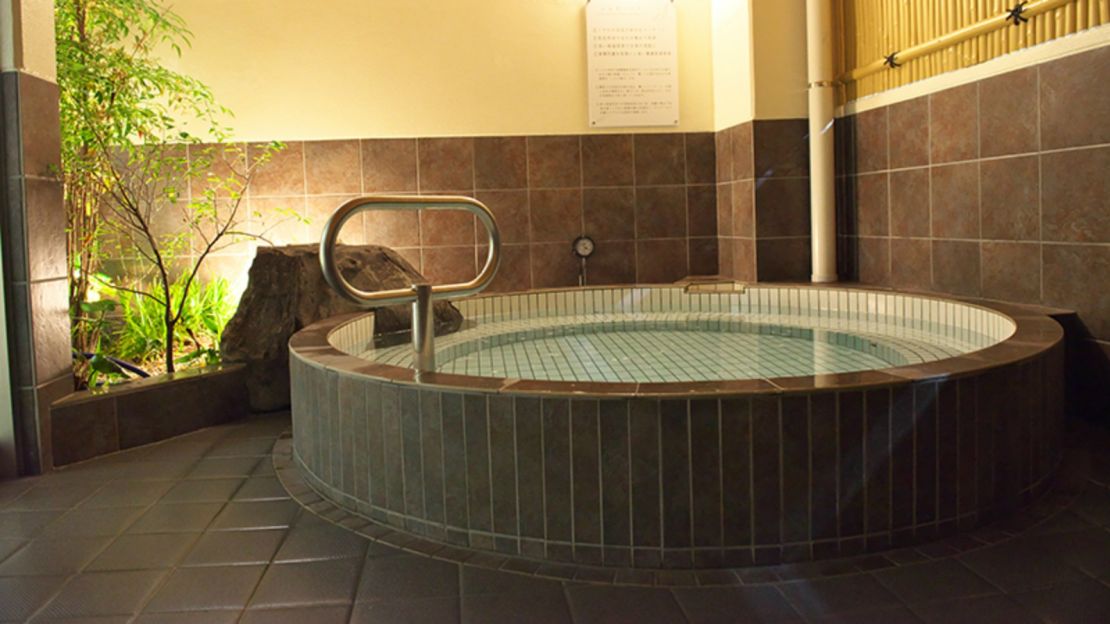
Saito-yu in its present, second-generation, form dates back to just 1960, but is one of very few nowadays offering a nagashi service. That’s the rather charming deal where a bath attendant will scrub your back and give you a seated massage after. If that’s not enough, there are also radium and ultrasonic jet baths.
Higashi Nippori 6-59-2, Arakawa-ku, no telephone; open 4 p.m.-midnight, closed Friday; saito-yu.com
Moegi-no-yu
Perhaps technically an onsen, but out in west Tokyo in the hills of Okutama, Moegi-no-yu makes for the perfect end to a day hiking in the surrounding mountains.
A large indoor bath and an outdoor wooden bath with views of the valley can be enjoyed by all, as can a free footbath outside for those still on the go. There’s a great selection of post-hike food and drink in a relaxation area above the baths too.
Okutama-cho, Hikawa 119-1, +81 (0) 428 82 7770; open 9:30 a.m.-9:30 p.m., closed Monday; okutamas.co.jp
Jakotsu-yu
Found in the Asakusa area, along with around 30 other sento, Jakotsu-yu is a great spot to head to after the nearby firework display every summer while a million other folk try and fit on the first train leaving the area. A huge image of Mount Fuji dominates, with mosaics of pines and cherry blossoms on other walls. Vending machines issue tickets and are multilingual in Japanese, English, Chinese and Korean.
Asakusa 1-11-11, Taito-ku, +81 (0) 3 3841-8645; open 1 p.m.-midnight, closed Tuesday; jakotsuyu.co.jp
Editor’s note: This article was previously published in 2012. It was reformatted and republished in 2017.





